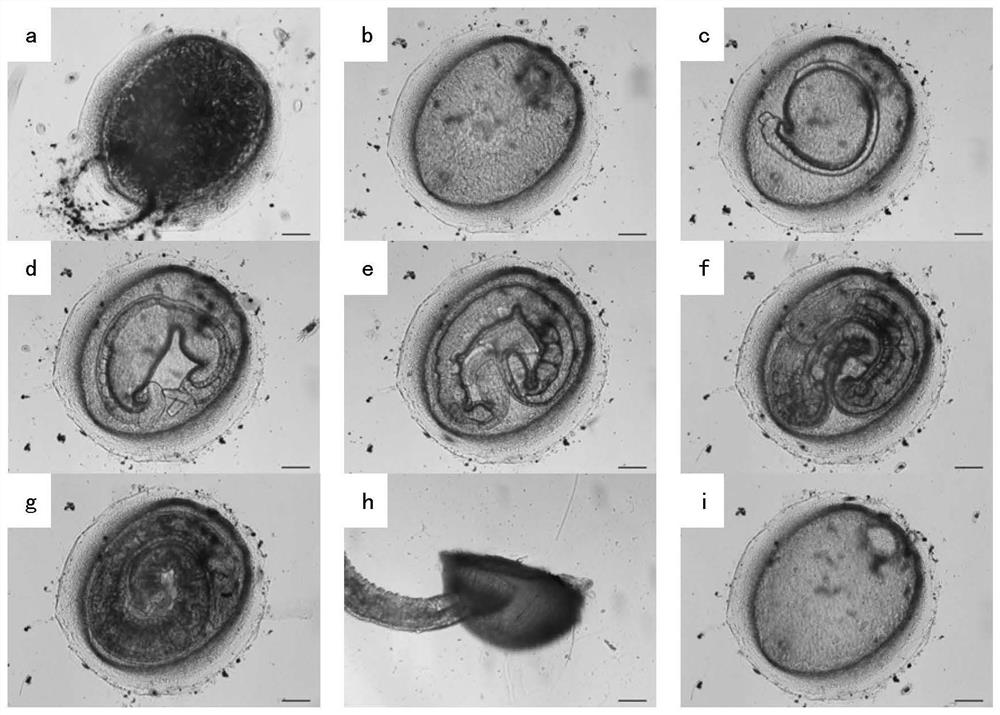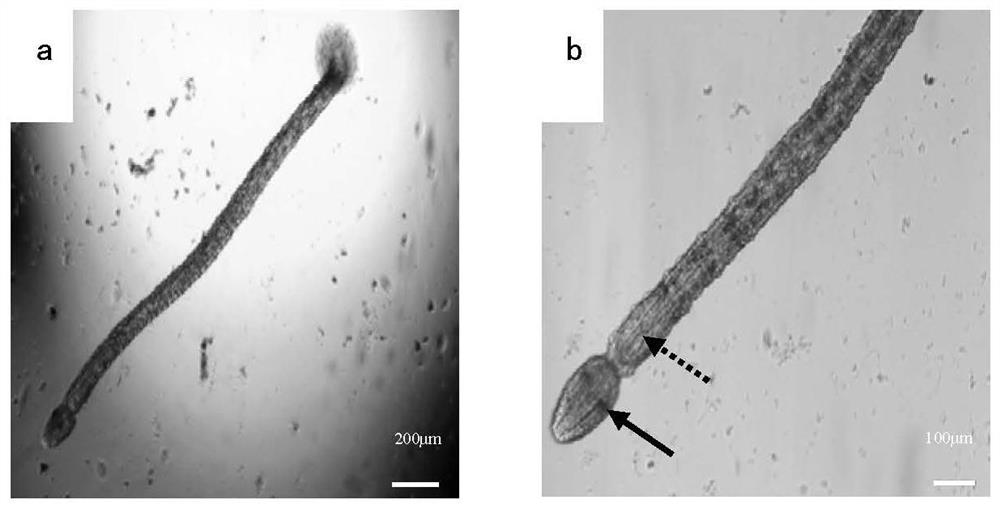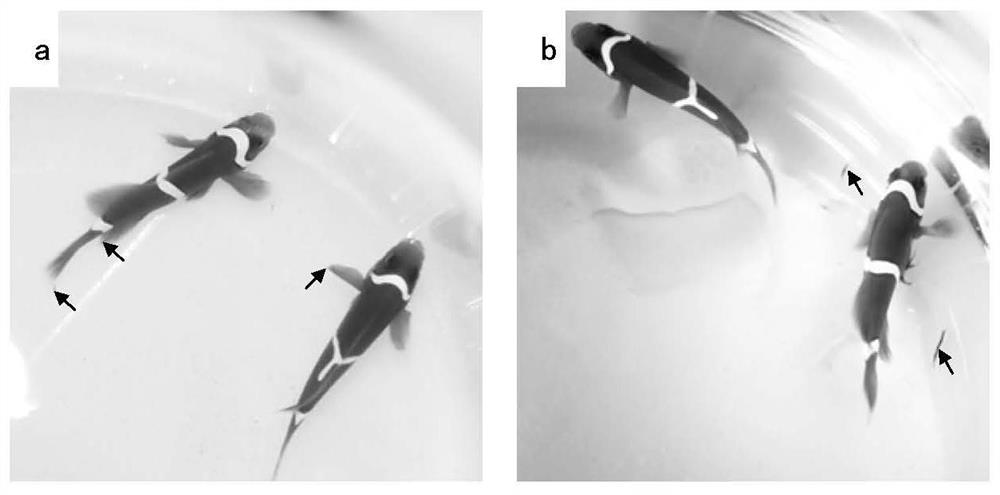A method of artificially cultivating seawater leeches using the damselfish
A technology for damselfish and seawater fish, applied in the field of aquaculture, can solve the problems of difficulty in obtaining parasite samples for research work, and less research on leeches
- Summary
- Abstract
- Description
- Claims
- Application Information
AI Technical Summary
Problems solved by technology
Method used
Image
Examples
Embodiment 1
[0027] Example 1: Hatching eggs and production of young places
[0028] 1) Pick the seeds
[0029] Choose a body length in 10mm or more, and 16 calendar Z.arugamensis in the body of the body.
[0030] 2) Production of eggs
[0031] Put the selected seeds into a 12-well cell culture plate, one of the apertures containing 2 ml of salinity 30 per well, cultured in a constant temperature incubator at 26 ° C, 1 / 2 sea water per 2D . After 4 days, the seed was removed and the eggs were observed. During this time, 16 species of the vermicaphysics were 259.
[0032] 3) Hatching eggs
[0033] Eggs continue to incubate in a constant temperature incubator at 26 ° C, transfer 1 / 2 seawater every 2D. After 10 days, 259 eggs were incubated with 217 young blood, and the hatching rate was 83.78%.
[0034] 4) Observing the development of eggs
[0035] 20 eggs were randomly selected, and the development of eggs was observed under an inverted microscope. The fish is yellowish brown, the shape is simil...
Embodiment 2
[0039] Example 2: Cultivated Yangpeng
[0040] 1) Roasted ribbon
[0041] Choosing a 6-tid of a healthy bitbarsel marties, cultured in 3 2L glass beakers, and 2 per capitle 2. During the aquaculture, water temperature is 26 ° C, salinity 30. For 1 / 3 sea water every day, feed it once.
[0042] 2) Summer's development
[0043] The incubated 30 young blood was transferred to the above-mentioned beaker containing the chepackwarm, 10 piths per beaker. The young vermischers will find the host fish in their own, and they are attached to the fingers of the host fish, the eyes, etc. image 3 ). After 1D, the blood body of the sustaining the host fish was black, the body length was about 2.2mm, and the body became thick. image 3 a). Located with a speed of about 1 mm per day, the body is uniformly uniform, slowly becomes an angry, which can distinguish a narrow neck and a width torso portion. After about 11 days, 30 fish vermor vented length reached 10 ~ 15mm, developed as an enrichment ( Fi...
Embodiment 3
[0045] Example 3: Artificial cultivation of sea waterfish Z.arugamensis using the rattlefish 鲷 人
[0046]Under the conditions of water temperature 26 ° C, salinity 30, use the rattle of cheek owners to cultivate sea waterfish z.arugamensis, fish filming from eggs, it takes 9 days, and the maternal gelling is an enrichment, which is about 20D can complete the cultivation of a generation of fluts.
PUM
 Login to View More
Login to View More Abstract
Description
Claims
Application Information
 Login to View More
Login to View More - R&D
- Intellectual Property
- Life Sciences
- Materials
- Tech Scout
- Unparalleled Data Quality
- Higher Quality Content
- 60% Fewer Hallucinations
Browse by: Latest US Patents, China's latest patents, Technical Efficacy Thesaurus, Application Domain, Technology Topic, Popular Technical Reports.
© 2025 PatSnap. All rights reserved.Legal|Privacy policy|Modern Slavery Act Transparency Statement|Sitemap|About US| Contact US: help@patsnap.com



